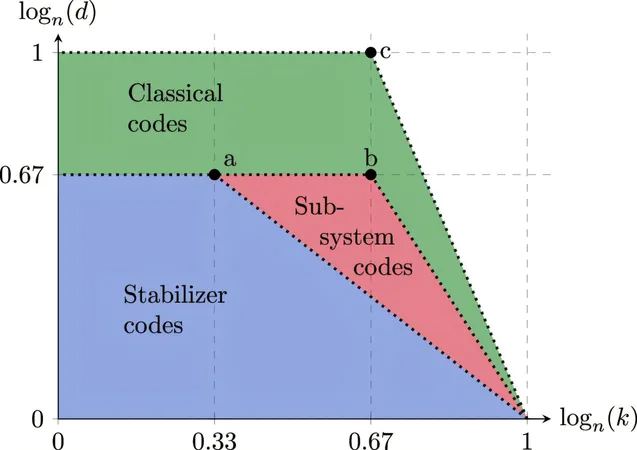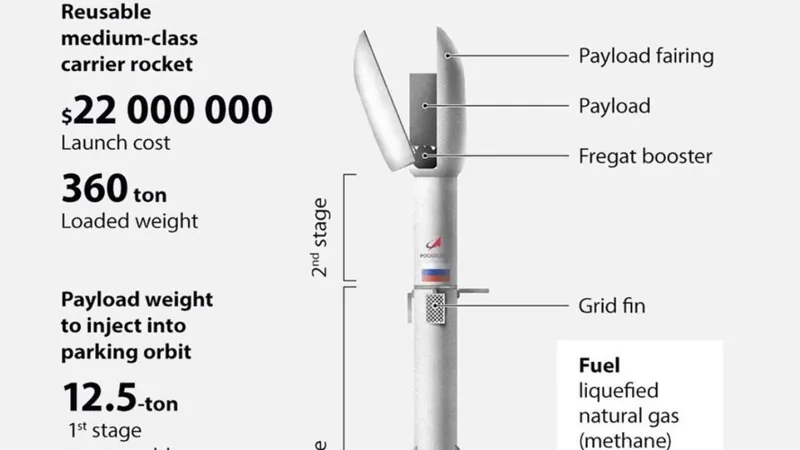
Breakthrough in Quantum Error Correction Paves the Way for Miniaturized Quantum Computers
2024-11-11
Author: Ming
Groundbreaking Development in Quantum Error Correction
In a groundbreaking development, two quantum information theorists at the University of Sydney Nano Institute have discovered an innovative error correction method that could revolutionize the future of quantum computing. Researchers Dominic Williamson and Nouëdyn Baspin have created a new theoretical framework that promises to mitigate errors in quantum hardware with significantly fewer qubits, potentially leading to the advent of a compact quantum hard drive.
The Challenges of Quantum Computing
Quantum computers have the uncanny ability to tackle complex problems that are currently unsolvable by classical computers. However, one of the paramount challenges they face is devising effective error correction mechanisms; errors can arise frequently due to environmental factors and operational inefficiencies. Williamson and Baspin's work addresses this issue by introducing a pioneering three-dimensional architecture that efficiently corrects errors across two dimensions, outperforming existing methods that only function along a one-dimensional plane.
Resource Efficiency in Error Correction
"The need to utilize most of the qubits in current systems just to suppress errors has been a bottleneck," explains Dr. Williamson. "Our research unveils a framework requiring fewer qubits to correct errors more effectively, thus freeing up valuable computational resources for actual processing tasks." This means instead of a high percentage of qubits simply dedicated to error suppression, more can be used for meaningful quantum computation.
Potential Impact on Quantum Computing
Published in *Nature Communications*, their paper outlines the potential of their new architecture to exponentially enhance the scalability and efficiency of quantum systems. By utilizing a unique structure capable of handling errors that scale with the square of the physical dimensions, their theoretical model can address a greater number of errors without a corresponding increase in qubit resources.
New States of Quantum Matter
Ph.D. candidate and co-author Baspin remarked, "Our discovery highlights new states of quantum matter that have unique properties yet to be observed." This insight opens the door to more sophisticated quantum programs and algorithms that could vastly improve performance in areas like cryptography, optimization, and material science simulations.
Advancements Over Conventional Paradigms
With conventional quantum error correction paradigms, such as the widely used surface code, facing challenges in scalability, Williamson and Baspin's models signify a crucial leap forward. Their three-dimensional topological codes demonstrate how quantum errors can be managed more effectively, which is vital for constructing future quantum memory systems—an essential part of practical quantum computers capable of large-scale operations.
Reshaping Quantum Computing Design
In the words of Professor Stephen Bartlett, Director of the University of Sydney Nano Institute, "This breakthrough has the potential to reshape how quantum computers are designed and utilized. It could broaden the accessibility and practicality of quantum computing for diverse applications, ranging from secure communications to complex simulations of quantum systems."
A New Era in Quantum Technology
As we stand on the brink of a new era in quantum technology, the implications of this research extend far beyond theoretical interest—they herald the dawn of a more compact, efficient, and power-packed future for quantum computing. Could this spark the next technological revolution? The potential is tantalizing!




 Brasil (PT)
Brasil (PT)
 Canada (EN)
Canada (EN)
 Chile (ES)
Chile (ES)
 España (ES)
España (ES)
 France (FR)
France (FR)
 Hong Kong (EN)
Hong Kong (EN)
 Italia (IT)
Italia (IT)
 日本 (JA)
日本 (JA)
 Magyarország (HU)
Magyarország (HU)
 Norge (NO)
Norge (NO)
 Polska (PL)
Polska (PL)
 Schweiz (DE)
Schweiz (DE)
 Singapore (EN)
Singapore (EN)
 Sverige (SV)
Sverige (SV)
 Suomi (FI)
Suomi (FI)
 Türkiye (TR)
Türkiye (TR)